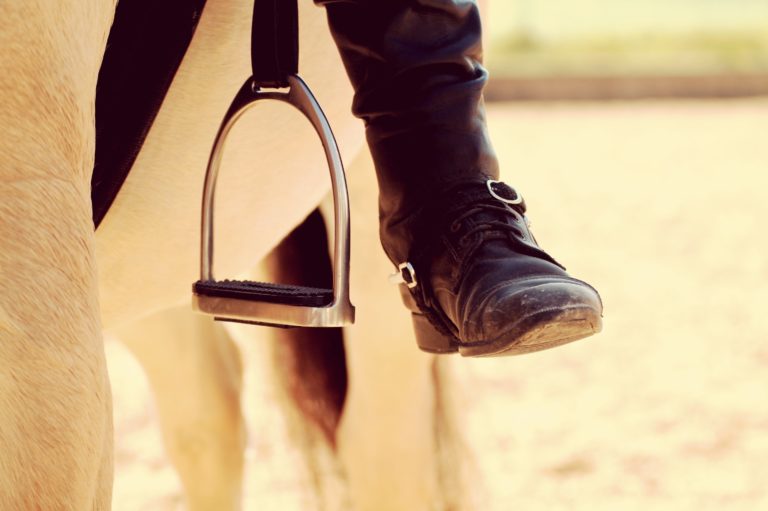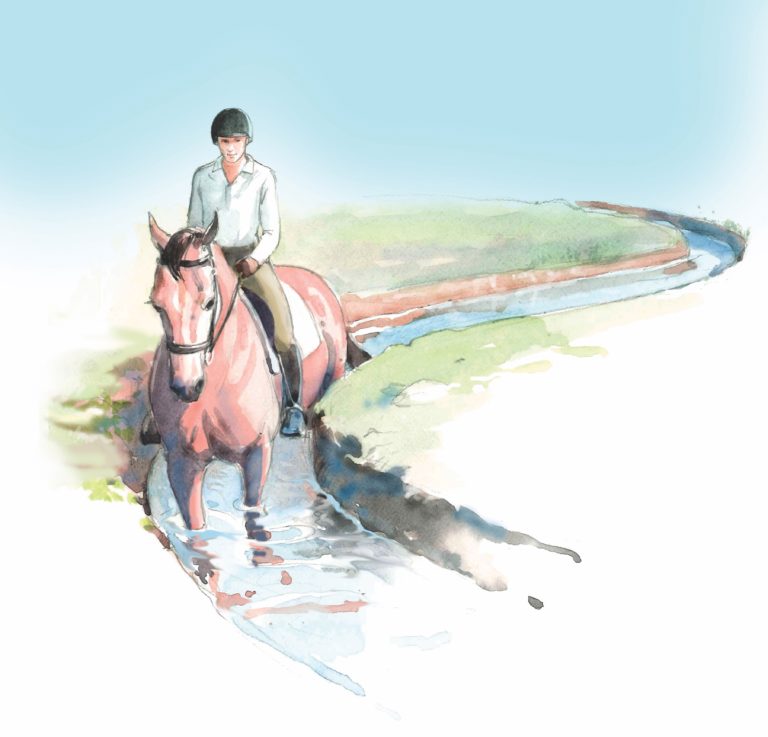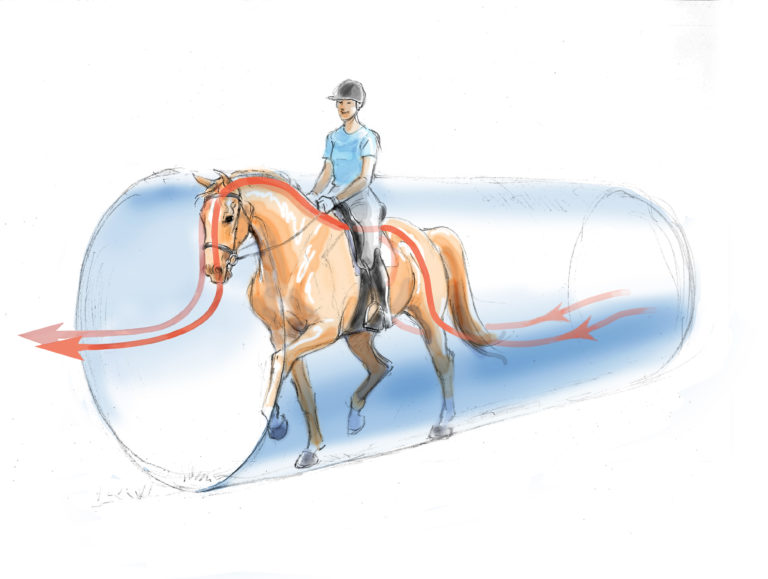Q: An instructor once told me that it is valuable to practice halting at the walk while riding on the buckle, using no reins and only your seat. I am not able to do this. Are there any benefits to practicing the halt like this? How do you do it exactly? Would this method also help me with my half halts?
—Beth Larson of Lexington, Kentucky
A: Many—maybe most—educated and effective riders have spent hours on the longe line, learning to use their seat, or weight, hand and leg aids independently. Isolating these aids and learning how they influence a horse’s movement, balance, energy and behavior is extremely important. As the USDF teaching manual states, a horse can be influenced correctly only from an independent and well-balanced seat.

As humans, we tend to use our hands and arms on a horse to balance the horse, for speed control and perhaps even for balancing ourselves. The purpose of an exercise like halting from the walk without contact is to learn to develop the rider’s seat as an aid that is independent and effective in controlling the horse’s tempo, changes of gait and rhythm. By gaining control of the horse’s tempo and rhythm you have the foundation of the Training Scale as well as the foundation of a correctly ridden half halt.
Taking the rein aids out of the mix can take away your feeling of control. Fear or lack of trust can exacerbate these feelings. The best-case scenario is to have access to a horse who is educated to the seat aids and calm and trustworthy, so you can learn. Preferably, you should practice on a horse you can be longed on in a lesson with a good instructor. If the halting-without-reins exercise is new to the horse, it helps to have an educated rider help your horse to understand this new language before you try it.
Start with a stable, vertical and balanced position on your horse—so that you and your horse are in balance together—in the walk. You should be able to lengthen and shorten your horse’s walk stride by lengthening and shortening the swing of your hips, keeping your vertical posture stable. It’s a little bit like swinging a swing higher or lower with bigger or smaller swings but staying still and quiet with the rest of your body. This requires a lot of precise core control. Your leg aids are responsible for asking your horse to maintain forward energy as necessary. Your shoulders, hips and heels should stay vertically aligned, and you need to maintain your lateral balance, so avoid collapsing to one side or the other. Your seat muscles should stay soft and relaxed, not grip, as this can cause your horse to hollow his back away from your seat. Start with small transitions within the walk. As you become familiar with your horse’s reaction to your seat, you should be able to progress to full halts.
Feel how much or how little it takes to communicate the response you want with each individual horse you ride. A more forward or less balanced horse may be harder to get all the way into a halt. A horse who has a better balance or who likes to stop is usually easier to halt. It may be helpful at first for you or your longe person to use voice aids or even rein aids until you and your horse figure each other out.
Try using a number system, let’s say between 1 (for the smallest, shortest walk steps) and 10 (for the biggest, longest steps). Beginning in the range between 4 and 6, increase that range while maintaining a clear, regular four-beat rhythm in your walk. Maintaining the regularity of the rhythm in all gaits will help you keep the horse calm and in balance.
If your horse has dropped his back—has hollowed his back away from the influence of your seat—it is a challenge to use the seat aids to achieve the halt. In this case, you or a trainer will need to be able to ride your horse into a connection, into some contact or even use side reins to get him to lift his topline and be up on the seat. When a horse drops his back, it will take some experimenting to figure out why that is happening. The problem can be caused by too strong of a driving seat, gripping legs, the rider losing vertical stability and unbalancing the horse by leaning too far back or forward or off to one side. Imagine if you were a dancer and had to lift or carry your partner above you. It would help greatly if your partner was still and balanced, not unmanageable.
If a horse has a poorly developed topline, he usually requires a rider with the skills and experience to develop his back to be stronger and to make him more rideable by using connecting exercises such as turns on the forehand, leg yields, transitions within gaits, shoulder-fore, etc.
Freedom and expression, elasticity of the topline and self-carriage all come from influencing a horse through the seat, but you have to study hard to be able to stay as one with your horse’s motion while at the same time being able to modify, regulate and control the movement instead of inhibiting and stifling it.
Using a hand brake is like using only the front brake on a bicycle. The energy becomes momentum onto the horse’s forehand in an abrupt, stiff and downhill manner. A horse with a stiff back is harder to ride and balance and is usually not as happy or sound.
A loose, supple and strong topline is supported by both your and your horse’s core, protecting your horse’s and your own joints from unsupported and unbalanced impact. It makes a dressage horse light on his feet and wonderful to ride. This is why a rider must strive to be able to halt from her seat, not the rein aids, even when it seems difficult.
This article first appeared in the October 2018 issue of Dressage Today.

Lisa Pierson
is a USDF Certified Instructor through Fourth Level, a USDF bronze, silver and gold medalist, a USDF “L” Program graduate and has won several Regional Championships and Reserve Championships in USDF Regions 2 and 8. Based in Brewster, New York, she operates Pleasant View Farm.











